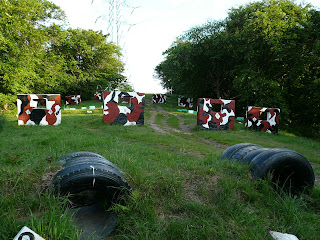Godang-bong peak, Geumjeong-san from the North gate.

The North Gate of Busan's fortress wall was my start point this Sunday with the trail heading up to Godang-bong (801m), the highest peak of Geumjeong-san.
Geumjeong-san "Golden Spring Mountain" gets it's name from the legend of Geumeol, a golden fish who descended from the world of Brahma on a five-coloured cloud to a golden pond, located on the eastern side of the peak. The temple Beomeo-sa below also gets it's name from this legend.
From Godang-bong back to the North Gate and the peaks of Ognya-bong and Uisang-bong.

Gomo-dang, on Godang-bong peak.

Near the top of Godang-bong is a shrine to Gomo, a Goddess of heaven who is said to have come down to become the spirit of Geumjeong-san mountain.

Godang-bong peak; small, rocky and popular on a Sunday.

The ridge continuing from Geumjeong-san, following the course set by the power lines, bypassing the peak of Janggun-bong to the left.

The Nakdong river below the ridge and a couple of adventurous dudes on the rocks.

The first signpost specific to the trail. (낙동정맥! heading right)

And to the left the trail to Janggun-bong.

Gyemyeong-bong peak

Beomeo-sa temple from Gyemyeong-bong below the ridge of Geumjeong-san.

The long urban river of Busan, stretching north to Nopo-dong below Gyemyeong-san.

And that may be the last view back on Busan city, the ridge now heads into rural Korea, passing through some of the most remote areas of the country on it's journey to Taebaek-san.
I'll be back on the trail June 7th for a couple of days for the walk to Habuk town.
-cheers



























































